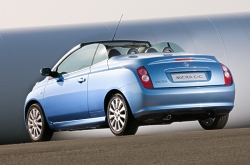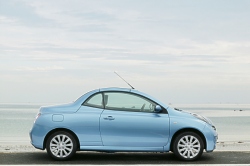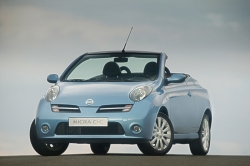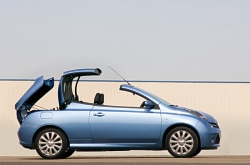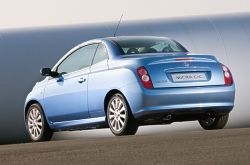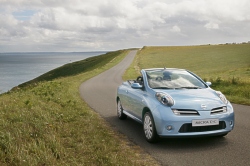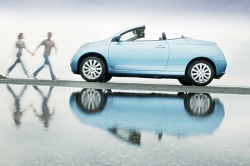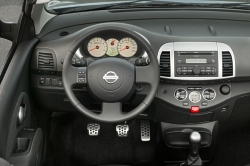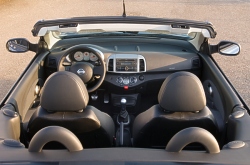
.
. .
..
. . .
© 1998 - 2005
Copyright & |
“Chic, elegant and modern, Micra C+C adds a new dimension to the Micra family. Not only does it provide all the style of a convertible, it remains practical with seating in the rear and a sizeable boot. With Micra C+C, owning a convertible need no longer be a compromise.” Carlos Tavares, Senior Vice President, Product Planning and Corporate Strategy, Nissan Motor Limited
For Micra C+C, all the metal elements of the roof frame will be delivered by Karmann and painted with the car by NMUK before being separated and sent to the Karmann facility. Here the frame will be covered with the roof’s glass panels and assembled as a complete module before being reunited with the original car. This process is similar to the way in which car doors are produced: in virtually every car plant, the bare door frames are painted with the car before being removed to a separate facility where trim, glass, electrical features, wiring and locks are added. The completed doors are then returned to the production line where they are attached to the relevant car. Trevor Mann, NMUK Deputy Managing Director, adds: “We welcome Karmann to Sunderland for two main reasons. The first, obviously, is down to the vital contribution they are making towards the production of the Micra C+C. “The second is that their integration on site marks the first of such collaborations at Sunderland, but it won’t be the last. As part of the Nissan Integrated Management System (NIMS) we are actively talking to other suppliers within NMUK with a view to integrating production and to ensure we maintain the highest quality levels into the future.” “To ensure Micra C+C attains the highest possible quality standards we are working closely with our supplier Karmann… so close, in fact, that we can literally rub shoulders with them at the plant.” Colin Dodge, Senior Vice President, Manufacturing, Purchasing and SCM, Nissan Europe. Undeniably elegant, Micra C+C is lower and longer than the hatchback Micra. The roof line, dictated by the steeply raked windscreen, is 110mm lower than on the conventional car while Micra C+C is 90mm longer overall: the extra length is all to the rear of the car where it provides the extra room needed to stow the hardtop behind the rear seats. The hardtop itself is a work of art. It takes just 22 seconds to fold clamshell-style beneath the double-hinged trunk lid: it is hinged at the bottom and opens front to rear when the roof is raised or lowered and at the top when opened conventionally to stow luggage. Development work has also focused on ensuring Micra C+C is as user-friendly as possible. Thanks to the Auto-Open Roof®, raising or lowering the roof requires a push on a single button – an automatic latching system does away with the need to manually lock or unlock the roof’s leading edge to the windscreen header rail. Furthermore, the roof can be raised or lowered with the vehicle on the move. But as well as having stunning looks, Micra C+C remains resolutely practical, enjoying class leading luggage space. With the roof lowered, the boot area provides 225 litres of stowage space, which rises to an impressive 457 litres when the roof is raised. To ensure that any luggage stowed in the boot doesn’t interfere with the roof when folded, a retractable blind in the boot area must be latched into place before the roof will move. As well as having the largest boot in its class, Micra C+C’s the cabin has a myriad of clever storage areas, especially a convenient lockable secret space under the passenger seat where you can leave valuables items even when the roof is down. Micra C+C is available with either the recently enhanced 65kW (88hp) 1.4-litre petrol engine or the newly developed 81kW (110hp) 1.6 16 valve twin cam petrol unit as found in the potent new Micra 160SR. Mechanically, the chassis follows the familiar MacPherson strut/torsion beam suspension layout of the Micra hatchback, fine-tuned to suit the special characteristics of Micra C+C.
|
. |


